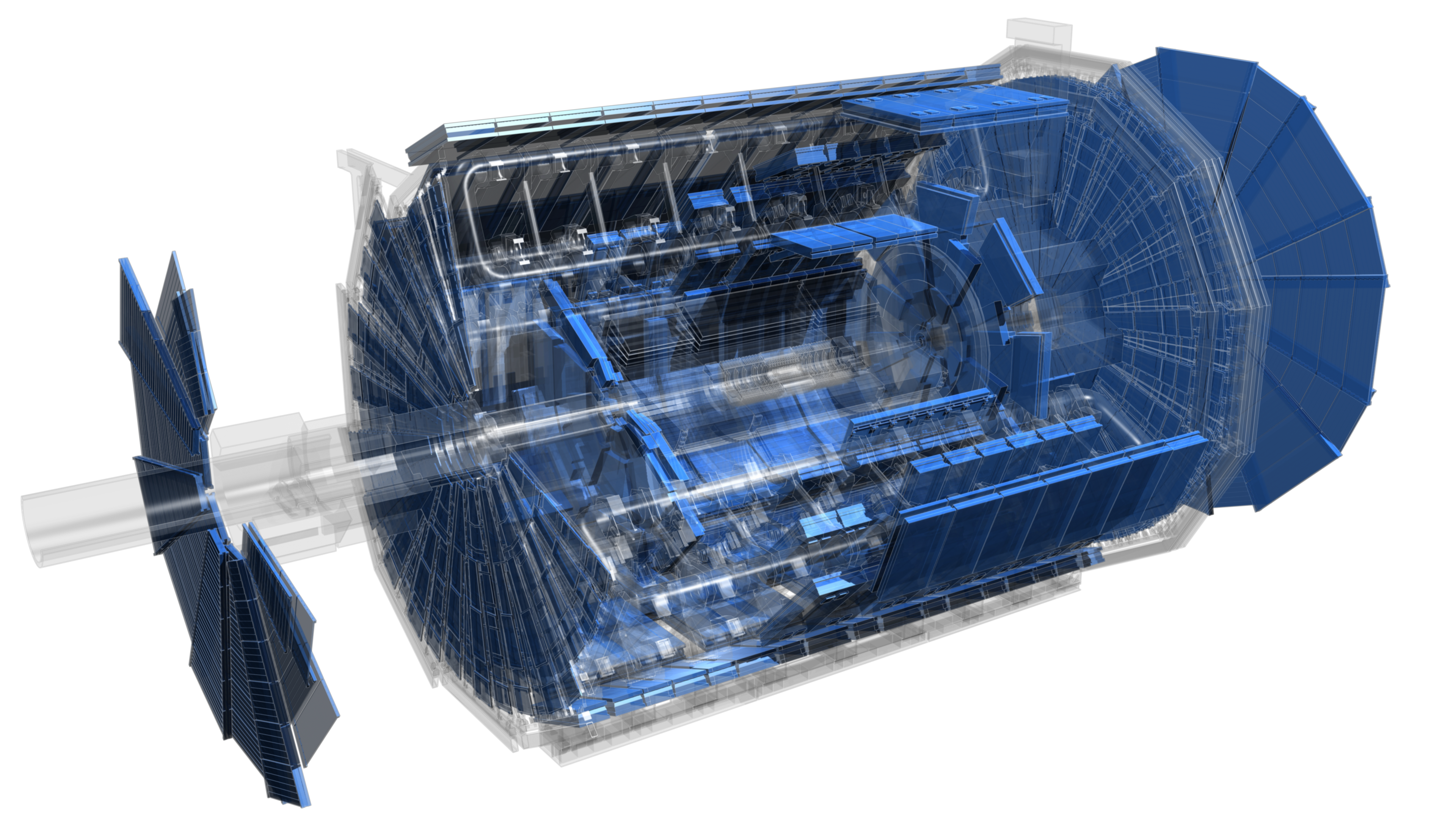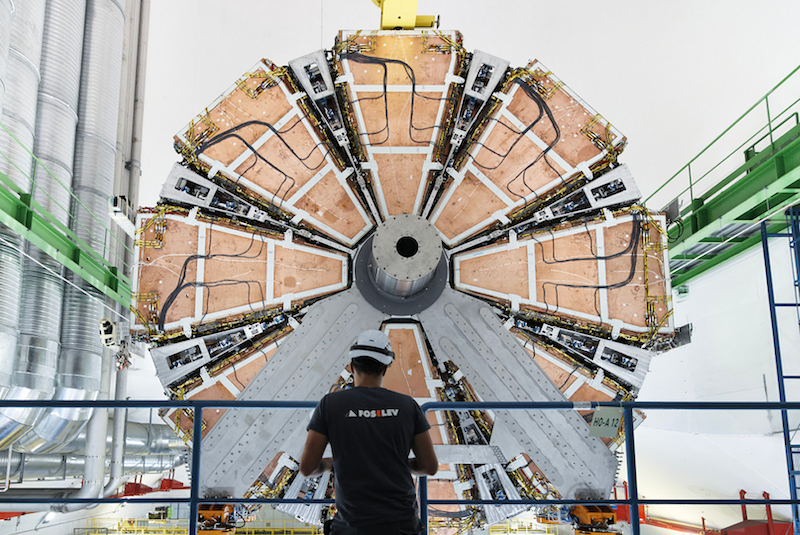
Muon Spectrometer
Identifies and measures the momenta of muons
The outer layer of the ATLAS experiment is made of muon detectors. They identify and measure the momenta of muons – particles similar to electrons but 200 times heavier, which allows them to cross the thick layers of the ATLAS Calorimeters.
Five different detector technologies are used: Thin Gap Chambers, Resistive Plate Chambers, Monitored Drift Tubes, Small-Strip Thin-Gap Chambers and Micromegas.
Precision Detectors
The precision detectors of the Muon Spectrometer are able to determine the position of a muon, to an accuracy of less than a 10th of a millimetre!
Monitored Drift Tube (MDTs) detectors are composed of 3 cm wide aluminium tubes filled with a gas mixture. Muons pass through the tubes, knocking electrons out of the gas. These then drift to a wire at the tube’s centre to induce a signal. Over 380,000 aluminium tubes are stacked up in several layers in order to precisely trace the trajectory of each muon.
Fast-Response Detectors
ATLAS uses fast-response detectors to quickly select collision events that are potentially interesting for physics analysis. They make this decision within 2.5 μs (400,000th of a second).
The Resistive Plate Chambers (RPCs) surround the central region of the ATLAS experiment. They consist of pairs of parallel plastic plates at an electric potential difference, separated by a gas volume. Thin Gap Chambers (TGCs) are found at the ends of the ATLAS experiment and consist of parallel 50 μm wires in a gas mixture. Both chambers detect muons when they ionise the gas mixture and generate a signal.
Micromegas and Small-Strip Thin-Gap Chambers (sTGCs) are two additional detector technologies specially designed for high-intensity LHC collisions. These detectors can track muons in high-density areas on either side of the experiment close to the LHC beam pipe, both quickly and with high precision.
The combined data from fast-response detectors gives a coarse measurement of a muon’s momentum, allowing ATLAS to choose whether to keep or discard a collision event.
More









